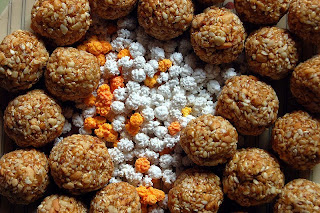Makar Sankranti (Sanskrit: मकर संक्रान्ति) or Sankranti or Sankranthi. marks the transition of the Sun into Makar (Capricorn) on its celestial path. This is significant considering the Winter Solstice marks the beginning of the gradual increase of the duration of the day. Scientifically, the shortest day of the year is around December 21st-22nd after which the days begin to get longer, hence actual Winter Solstice begins on December 21st or December 22nd when the tropical sun enters Makara rashi. Hence actual Uttarayana is December 21st. This was the actual date of Makar Sakranti too. But because of the earth's tilt of 23.45 degrees and sliding of Equinoxes, Ayanamasha occurs. This has caused Makara Sankranti to slide further over the ages. A 1000 years ago, Makar Sankranti was on Dec 31st and is now on January 14th. 5000 years later, it shall be by the end of February, while in 9000 years it shall come in June. Traditionally, this has been one of many harvest days in India.
Due to the geography and size of India, this festival is celebrated for innumerable reasons depending on the climate, agricultural environment, cultural background and location.
In Maharashtra on the Sankranti day people exchange multi-colored tilguls made from til (sesame seeds) and sugar and til-laddus made from til and jaggery. Gul-polis are offered for lunch. While exchanging tilguls as tokens of goodwill people greet each other saying – ‘til-gul ghya, god god bola’ meaning ‘accept these tilguls and speak sweet words’. The under-lying thought in the exchange of tilguls is to forget the past ill-feelings and hostilities and resolve to speak sweetly and remain friends.
This is a special day for the women in Maharashtra when married women are invited for a get-together called ‘Haldi-Kumkum’ and given gifts (utensil, clothes, etc.), which the woman of the house purchases on that day. Typically, women wear black sarees or black colour dress on this occasion.







